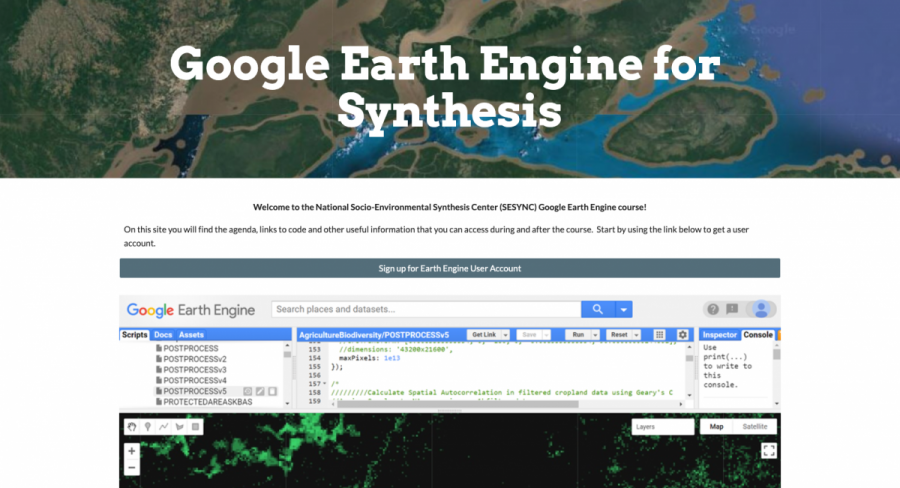Many people know Google Earth as the popular satellite imagery viewing program that transports users to places around the world without ever having to leave their desks. Fewer people, however, may be as familiar with its counterpart Google Earth Engine (GEE)—an analysis tool that takes these satellite images a step further by providing large corresponding datasets.
As a public geospatial processing platform that hosts more than 40 years’ worth of satellite images, GEE is available to users in academia, non-profit organizations, the private sector, and government agencies. Individuals can use this tool to conduct scientific analyses and develop visualizations of geospatial datasets—both of which are important components of socio-environmental (S-E) synthesis.
To demonstrate the potential benefits of GEE for S-E researchers, SESYNC postdoctoral fellow Varsha Vijay recently led a workshop that explored how to use GEE in synthesis research. With some of her fellow postdocs and members of SESYNC’s data science team in attendance, Vijay guided the workshop’s participants through a course she had designed herself called GEE for Synthesis.

Vijay said she designed the course to provide an introduction to spatial analysis and remote sensing in a cloud-based parallel processing environment for both the general public and the broader S-E research community.
“Part of my motivation for creating the course was the idea of broadening access and skills for computational analyses for conservation,” she said, “but the lessons are widely applicable to socio-environmental topics.”
For the course, Vijay developed a code repository with lessons for both in-person and remote instruction. Each code lesson includes code that she developed to demonstrate the functionality of the Google Earth Engine environment, she said.
Vijay also included in the course a series of case studies that draw directly from collaborations at SESYNC so that she could teach coding and spatial analysis in the context of real research questions. Additional resources for users, such as as resources for debugging, are also available through the course website.
“I hope that GEE for Synthesis serves as an ongoing resource to empower researchers dealing with the increasing volume of data that can be leveraged for synthesis research,” said Vijay.
Learn more about the course here.